ADHD Tool Tip: Reduce Decision Making Part 2, Meals
I’m beginning by reiterating that this series of blog posts in which I’m sharing my recommendations for ADHD tools is my answer to the many requests I get from coaching clients who want me to tell them what to use to solve a particular problem. I am generally reluctant to make recommendations as no one product or tool or strategy works for every person. Nonetheless, I understand the desire to have choices narrowed down and to know what someone else found useful.
This post addresses reducing decision-making in the moment to improve time management and productivity and to reduce analysis paralysis. Part 1 discussed managing the decision of what to wear. Part 2 in this post focuses on the decision of what to eat (sort of).
How often do you skip breakfast because it’s just too hard to prepare or takes too much time in the morning and you just don’t know what to make? How many times have you lamented that you should save money by taking your lunch but the task of making a lunch each morning feels like too much? How much food have you thrown away because you went to the grocery store with good intentions of eating breakfast or taking your lunch to work or preparing dinner but forgot what you bought when it came down to deciding what to make each day?
This is common among my clients with ADHD. And it’s frustrating for them. They have discovered that the key to success is, again, to reduce the number of food decisions they are required to make in the moment when they’re trying to get out the door in the morning or rushing to get a meal on the table in the evening.
How to do this? Answer: Food planning and food prepping.
Planning meals ahead of time of course reduces decision-making in the moment and ensures you will eat healthy and eat what you buy. I like this meal planning pad because it has a magnetic back so you can keep it visible on the fridge. On the left side of the page, write in meals for each day of teh week. On the right side of the page, list your grocery items. There’s even space for writing notes at the bottom of the page.
Though you can tear off and dispose if the pages at the end of each week, I think it’s a better idea to keep the pages of menus that really worked for you, your family, and your budget. Eventually, you’ll have weekly rotations of meal plans and grocery lists that are go-tos for you.
As for prepping meals, my ADHD clients take the worry out of mornings by preparing breakfast and/or lunch for each morning of the week and store it in their fridge in grab-and-go containers. These glass food storage containers are microwavable and have locking lids (so no spills).
Some clients even label a container for each day of the week, further simplifying things and eliminating even the decision of which container to pull out of the refrigerator. The name labels pictured here are waterproof and come with a permanent marker.
If you want to experiment with any of the products I’ve listed in this post, you can click on the highlighted text or the picture to buy it from Amazon. As an Amazon Associate, I earn from qualifying purchases. I encourage you to only use ADHD tool recommendations that feel right for you and how you operate.

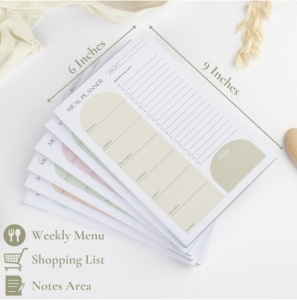
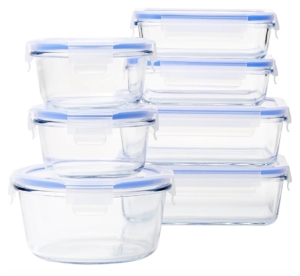
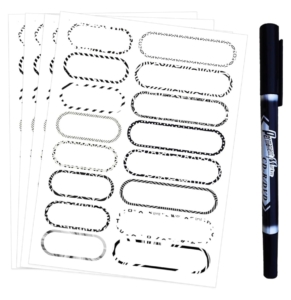

 ems that were useful and effective. Consider characteristics or patterns those gems have in common. How can you incorporate those into systems you create for yourself moving forward?
ems that were useful and effective. Consider characteristics or patterns those gems have in common. How can you incorporate those into systems you create for yourself moving forward? Keep it simple. This phrase seems so over used, yet it is so true. I have clients who spend hours, days even, creating complex systems with bells, whistles, and baubles of all sizes and colors to account for any and every possibility. Their systems are detailed, comprehensive, complex, and attractive but not practical. Their brains enjoy the creative process of putting them together but balk at actual implementation because the systems are too overwhelming and complicated to use. So, keep it simple.
Keep it simple. This phrase seems so over used, yet it is so true. I have clients who spend hours, days even, creating complex systems with bells, whistles, and baubles of all sizes and colors to account for any and every possibility. Their systems are detailed, comprehensive, complex, and attractive but not practical. Their brains enjoy the creative process of putting them together but balk at actual implementation because the systems are too overwhelming and complicated to use. So, keep it simple.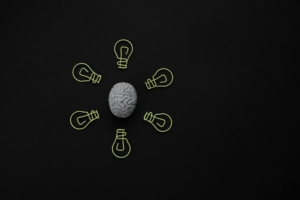 Use a system that works with YOUR brain. This requires some self observation, analysis, and, above all, honesty. It also requires you to let go of the idea (hope) that someone other than you knows the perfect magic way of doing things that will make everything in your life fall into place.
Use a system that works with YOUR brain. This requires some self observation, analysis, and, above all, honesty. It also requires you to let go of the idea (hope) that someone other than you knows the perfect magic way of doing things that will make everything in your life fall into place. Get a thinking partner. It’s hard to ask yourself the hard questions and be objective about your responses when just doing it in your head. A coach is specially trained to collaborate with you to help you move forward. If setting up with a coach doesn’t feel like the right move for you, a trusted friend or family member may be able to fill the role. Who is a person in your life who can listen, ask good questions, and collaborate with you to process your wants, needs, patterns, skills, and so forth?
Get a thinking partner. It’s hard to ask yourself the hard questions and be objective about your responses when just doing it in your head. A coach is specially trained to collaborate with you to help you move forward. If setting up with a coach doesn’t feel like the right move for you, a trusted friend or family member may be able to fill the role. Who is a person in your life who can listen, ask good questions, and collaborate with you to process your wants, needs, patterns, skills, and so forth? Carla arrived at coaching so frustrated with herself. She had determined a routine for her day in the previous session, but reported that she had “failed” at sticking with it. When I asked what she thought was getting in her way, she said, “It wasn’t a good plan. It doesn’t work. I just want a system that works.”
Carla arrived at coaching so frustrated with herself. She had determined a routine for her day in the previous session, but reported that she had “failed” at sticking with it. When I asked what she thought was getting in her way, she said, “It wasn’t a good plan. It doesn’t work. I just want a system that works.”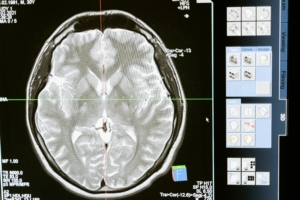
 he ADHD brain wants its dopamine hit. It begins looking elsewhere for stimulation and comfort. This doesn’t mean the system has failed, was no good in the first place, or needs to be thrown out. IT ALSO DOESN’T MEAN THAT YOU HAVE FAILED. Before scrapping your system, pause and take the opportunity to get creative and re-sparkle-ize your system. Make it flashy again to get your brain back on board.
he ADHD brain wants its dopamine hit. It begins looking elsewhere for stimulation and comfort. This doesn’t mean the system has failed, was no good in the first place, or needs to be thrown out. IT ALSO DOESN’T MEAN THAT YOU HAVE FAILED. Before scrapping your system, pause and take the opportunity to get creative and re-sparkle-ize your system. Make it flashy again to get your brain back on board.